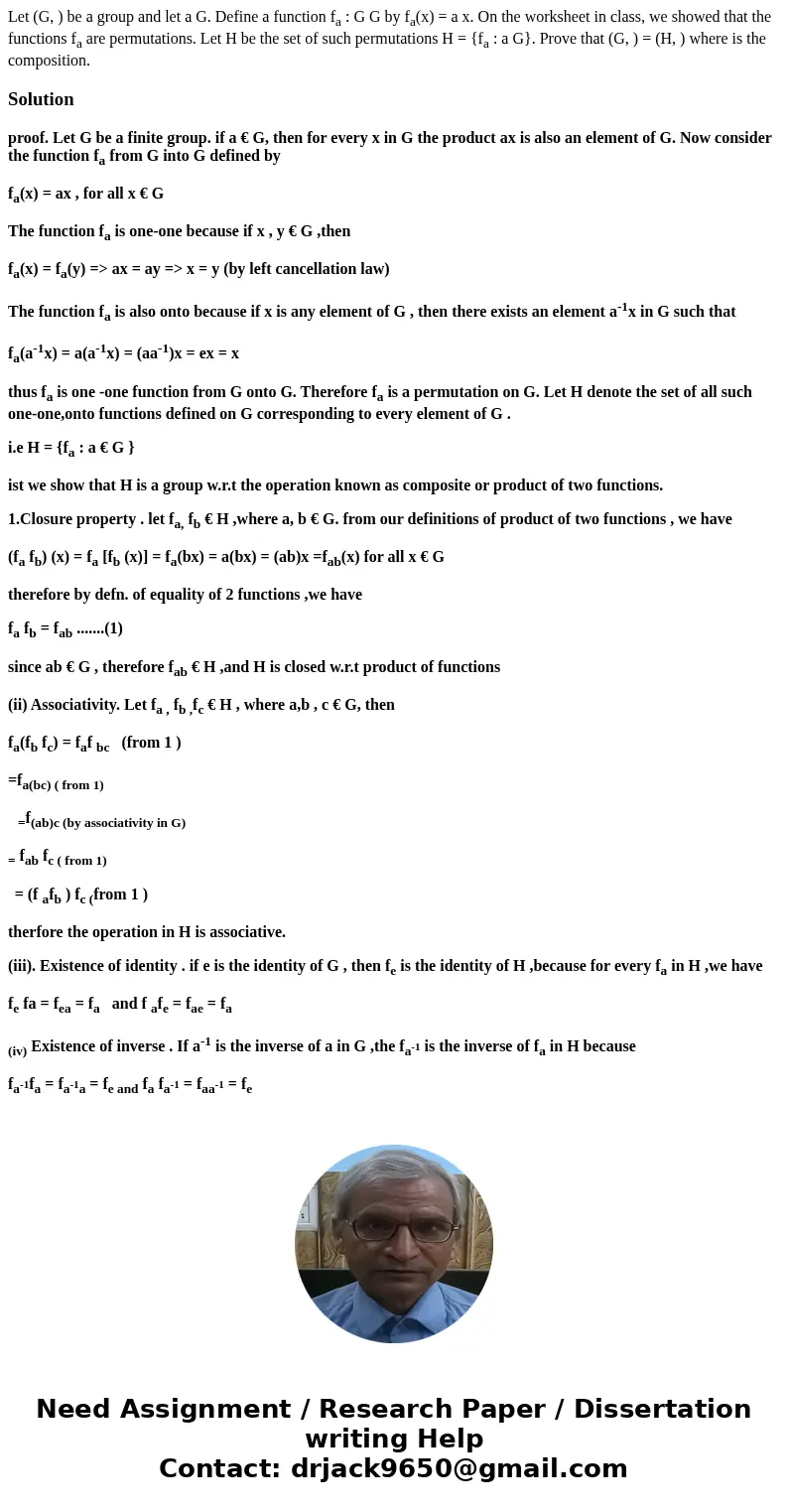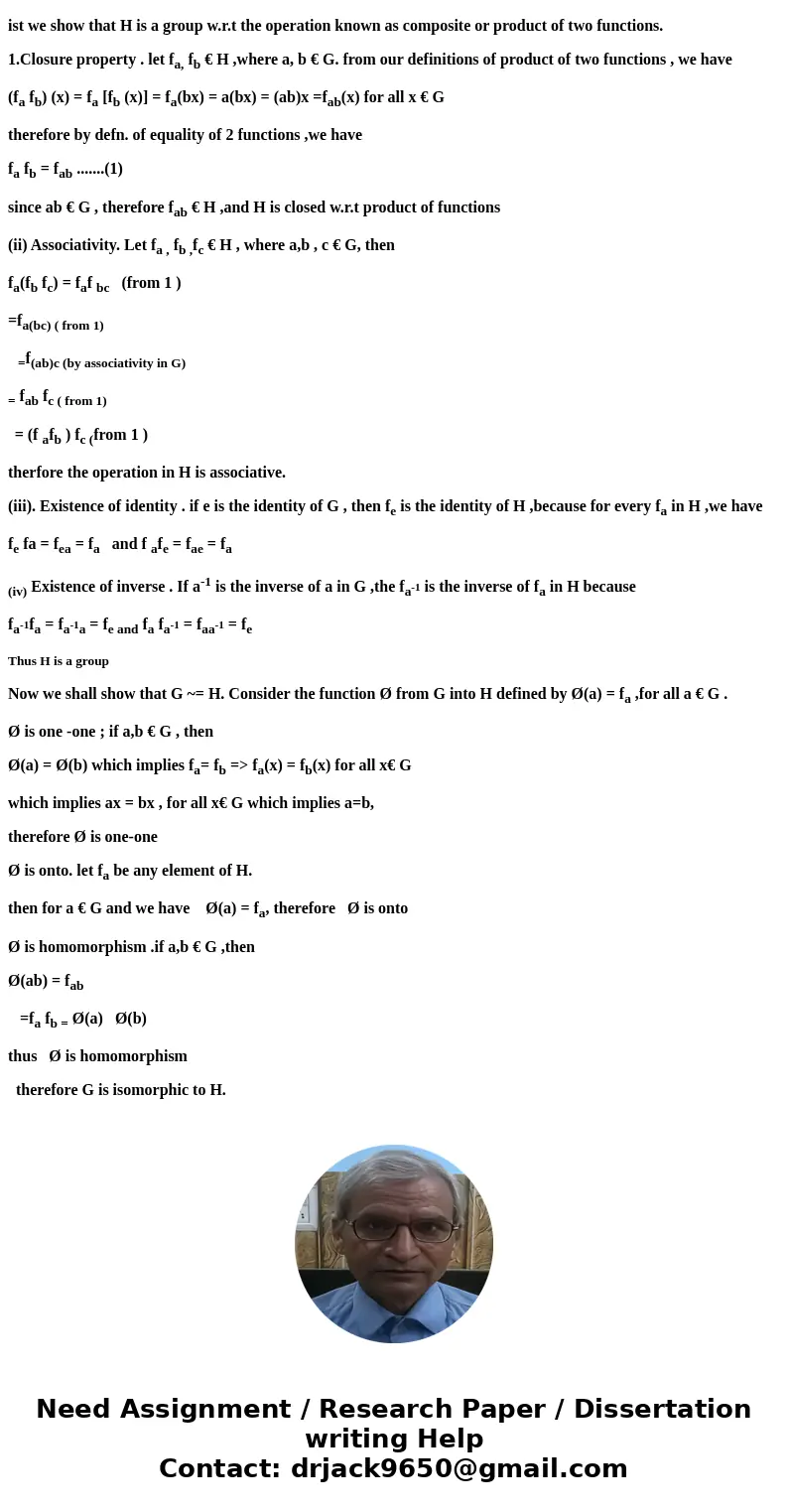Let G be a group and let a G Define a function fa G G by f
Let (G, ) be a group and let a G. Define a function fa : G G by fa(x) = a x. On the worksheet in class, we showed that the functions fa are permutations. Let H be the set of such permutations H = {fa : a G}. Prove that (G, ) = (H, ) where is the composition.
Solution
proof. Let G be a finite group. if a € G, then for every x in G the product ax is also an element of G. Now consider the function fa from G into G defined by
fa(x) = ax , for all x € G
The function fa is one-one because if x , y € G ,then
fa(x) = fa(y) => ax = ay => x = y (by left cancellation law)
The function fa is also onto because if x is any element of G , then there exists an element a-1x in G such that
fa(a-1x) = a(a-1x) = (aa-1)x = ex = x
thus fa is one -one function from G onto G. Therefore fa is a permutation on G. Let H denote the set of all such one-one,onto functions defined on G corresponding to every element of G .
i.e H = {fa : a € G }
ist we show that H is a group w.r.t the operation known as composite or product of two functions.
1.Closure property . let fa, fb € H ,where a, b € G. from our definitions of product of two functions , we have
(fa fb) (x) = fa [fb (x)] = fa(bx) = a(bx) = (ab)x =fab(x) for all x € G
therefore by defn. of equality of 2 functions ,we have
fa fb = fab .......(1)
since ab € G , therefore fab € H ,and H is closed w.r.t product of functions
(ii) Associativity. Let fa , fb ,fc € H , where a,b , c € G, then
fa(fb fc) = faf bc (from 1 )
=fa(bc) ( from 1)
=f(ab)c (by associativity in G)
= fab fc ( from 1)
= (f afb ) fc (from 1 )
therfore the operation in H is associative.
(iii). Existence of identity . if e is the identity of G , then fe is the identity of H ,because for every fa in H ,we have
fe fa = fea = fa and f afe = fae = fa
(iv) Existence of inverse . If a-1 is the inverse of a in G ,the fa-1 is the inverse of fa in H because
fa-1fa = fa-1a = fe and fa fa-1 = faa-1 = fe
Thus H is a group
Now we shall show that G ~= H. Consider the function Ø from G into H defined by Ø(a) = fa ,for all a € G .
Ø is one -one ; if a,b € G , then
Ø(a) = Ø(b) which implies fa= fb => fa(x) = fb(x) for all x€ G
which implies ax = bx , for all x€ G which implies a=b,
therefore Ø is one-one
Ø is onto. let fa be any element of H.
then for a € G and we have Ø(a) = fa, therefore Ø is onto
Ø is homomorphism .if a,b € G ,then
Ø(ab) = fab
=fa fb = Ø(a) Ø(b)
thus Ø is homomorphism
therefore G is isomorphic to H.


 Homework Sourse
Homework Sourse